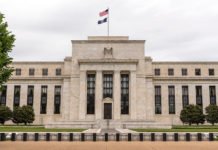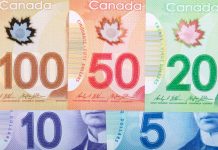Markets
Geopolitical tensions run ever higher after Israel called for an evacuation of all civilians in Gaza City, indicating the country is preparing for a ground invasion. Such a move would bring the clash in the Middle East into a new stage. While markets dismissed the conflict quickly earlier this week, they obviously remain vulnerable for any escalation. It’s no surprise then, that they err on the side of caution going into a weekend full of uncertainties. Core bonds rally with US Treasuries outperforming after being hit by yesterday’s marginally higher-than-expected (headline) CPI and poor 30-year bond auction. Yields in the US drop between 4.6 (2-y) and 10.1 bps (10-y). German yields drop 4.5 to 7.4 bps in a similar curve shift. Central bank speech included BoE’s governor stressing the need for restrictive monetary policy. He said there was progress on inflation but there is more to do. ECB’s Nagel vowed the central bank won’t rest until inflation is back at target and Simkus noted “all preconditions” are here to consider an earlier stop to the full PEPP reinvestments (currently scheduled to run through 2024). The comments did little to alter the current bond direction though. Important movers in commodity markets include oil. Brent surges >4% to $89.8/barrel amid mounting fears for supply disruption. Gold rallies 2.3%, taking out the $1900 barrier once again. Stock markets trade on the backfoot but left the lows behind in afternoon trading. EuroStoxx50 sheds 0.5% compared to a 1.1% loss earlier on the day. US markets open with gains between 0.1-0.8%, helped higher by the first, solid earnings from major US banks. The dollar recouped some of the losses incurred in the Asian session but remains set for marginal losses against most major peers. EUR/USD ekes out a slight gain to 1.0536 while DXY struggles in the mid 106/107 area. The Japanese yen appreciates a tad. At USD/JPY 149.5 the currency is nowhere near out of the danger zone though. The Swiss franc is also benefiting from its safe haven status. Scandinavian currencies buck the typical risk-off trend with the NOK eyeballing the oil price and SEK profiting from above-consensus inflation figures (see below). CE currencies trade quietly. The Czech crown outperforms local peers slightly while the Polish zloty stabilizes going into this weekend’s parliamentary elections.
News & Views
The Food Price Index of the UN Food and Agriculture Organization (FAO) was virtually unchanged in September from August. The index is now 10.7% below its corresponding level a year ago and 24.0% from the all-time high reached in March 2022. Vegetal oil prices decreased 3.9% M/M to be 14.6% lower Y/Y, driven by lower world prices for palm, sunflower, soy and rapeseed oils. Diary prices declined for the ninth consecutive month. Meat prices eased slightly (-1.0% M/M and 5.0% Y/Y). These were counterbalanced by 1.0% M/M rise in cereal prices. However this index still stands 14.6% below the level of August last year. Within this category, maize prices increased by 7.0% M/M after nine months of consecutive rises. By contrast, international wheat prices continued to drop, falling by 1.6% M/M. The rice price eased 0.5% M/M but still remains 27.8% above its year earlier value. Sugar staged the most outspoken move. The index jumped another 9.8% M/M, reaching the highest level since November 2010. The increase mainly reflects concerns with respect to production declines in key sugar producers, Thailand and India, due to drier-than-normal weather conditions. Prices rises could have been bigger were it not for the large Brazilian crop.
Inflation in Sweden slowed less than expected in September. Headline CPI inflation rose 0.5% M/M resulting in 6.5% Y/Y inflation, down from 7.3% Y/Y in August but less than the 6.3% consensus. CPIF inflation (index with a fixed interest rate, the Riksbank’s reference) grew 0.4% M/M to be 4.0% Y/Y. Core CPIF inflation (ex. energy) remains elevated at 0.5% M/M and 6.9% Y/Y. The monthly rise, amongst others, was driven by restaurants and hotels (0.6%), vulture and leisure (0.8%), healthcare (1.0%) household goods (2.0%) and clothing and footwear (4.7%). The Riksbank at its September 21 meeting raised the policy rate to 4.0% and left the door open for a ‘final’ 25 bps step if necessary. Today’s data raised the stakes for the November 23 meeting. However, the Riksbank also has to consider a very poor growth context and high consumer sensitivity to higher rates. The central bank today also reported that it sold USD 390 mln of FX in the week of September 25 as part of the hedging policy of FX reserves. The bank sold no euros. The amount was on the lower side of what some in the market expected. The Swedish krone gained modest ground today with EUR/SEK declining from about 11.58 to 11.54 currently.












